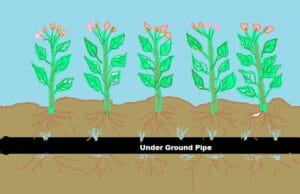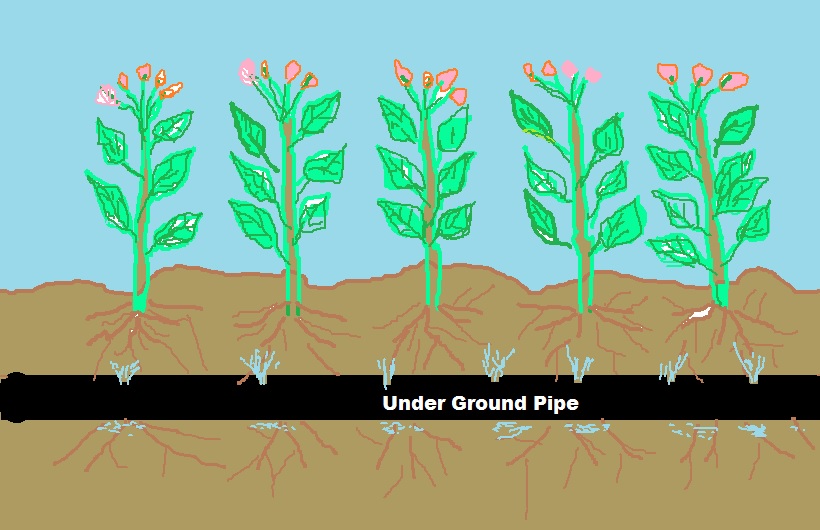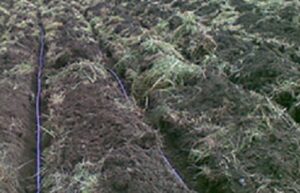
Importance of Sub-soil or Sub-surface Irrigation System
Introduction;
Sub-soil irrigation means the application of water to the crop from beneath of soil surface It may be done either by constructing trenches or by the installation of underground pipelines(impervious layer)
Under this system, water is discharged into trenches or pipelines and allowed to remain there for the whole period of irrigation and further horizontal and vertical movement of water take place through capillary action to the soil (between the trenches or pipes)
How Sub-soil or Sub-surface Irrigation System works?
1) In the subsoil irrigation system, water is applied into a series of field ditches deep down up to the impervious layer. It then moves laterally and then vertically through capillaries and saturates the root zone.
2) A continuous supply of moisture in the crop root zone is, thus, assured by the artificial water-table conditions created by the ponding of irrigation water on the impervious layer.
The vicinity of the root zone and water under pressure is distributed through these pipes.
3) An impervious sub-soil at a depth of two meters or more, highly permeable loam or sandy-loam surface soil, uniform topographic conditions, and moderate slopes favor sub-irrigation. Under such conditions, proper water control to prevent alkali accumulation or excess water logging usually results in the economical use of water, high crop yields, and low labor costs in irrigation.
4) The initial investment and maintenance costs are prohibitive The system is, however, very efficient, since the water losses through evaporation from the wet surface can be minimized.
5) In high rainfall areas or areas with high-intensity periods this system will not work efficiently. This system is suitable for long-duration or perennial crops of high value or where there is a limitation of surface irrigation.
7) This system is practiced in Gujarat and Kashmir for growing cash crops on sandy-loam soils. Small grains and root crops irrigated by this system provided there is no development of salinity or alkalinity due to the upward capillary water flow from the shallow water table.
Advantages of Sub-soil or Sub Surface Irrigation System;
1) This system possesses good control over water application It also ensures uniformity of application of water
2) Losses of water due to evaporation is highly reduced
3) The quantity of water applied to the field can be easily fine-tuned. This method avoids loss of water due to runoff or evaporation
4) Frequent irrigation can be easily performed resulting in maintaining optimum soil moisture content in the root zone
5) This system is highly suitable for windy and arid areas
6) Pre-treated wastewater can be used for irrigation under this system because the risk of direct contact with crops and laborers is reduced
7) Elimination of soil-borne diseases, such as fungus, caused by wet thatch from watering.
Disadvantages of Sub-soil or Sub Surface Irrigation System;
1) This system has the risk of clogging
2) Under the saline water areas, The salts of irrigated water accumulate at the wetting front
3) Some time the under ground pipeline openings get damaged or blocked by root hairs
5) Suspended organic matter and clay particles in the irrigation water may damage the system
6) Rodents may damage the Pipeline by chewing





Pingback: Importance and Types of Surface Irrigation System - Agrovista-Farming
Pingback: Dry or Semi Dry Upland Rice Cultivation in India - Agrovista-Farming
Pingback: Cultivation of Lucerne (Medicago sativa) or Alfalfa in India - Agrovista-Farming